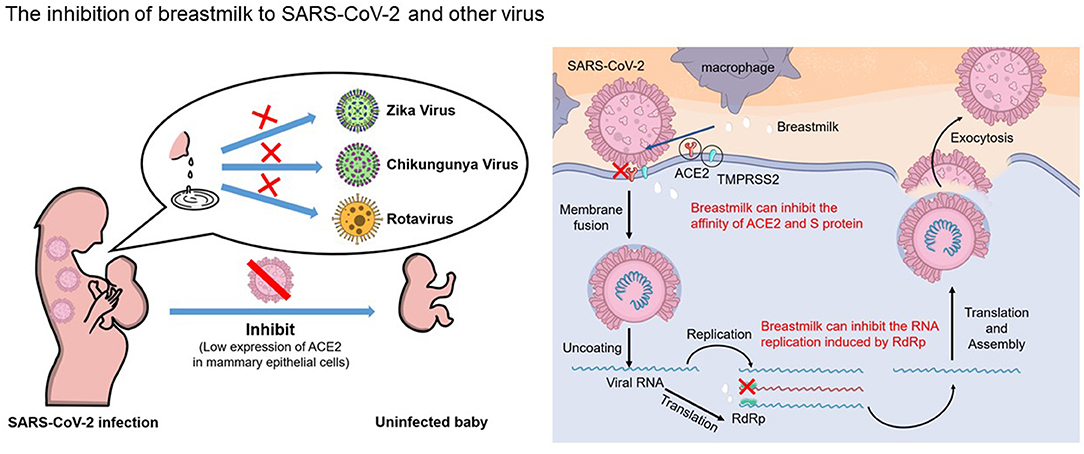Voriconazole is a potent antifungal medication used to treat various fungal infections. For breastfeeding women, the safety of any medication is a crucial concern. This article delves into the safety profile of Voriconazole Powder for nursing mothers, exploring its potential effects on breast milk and infant health. We'll examine current research, medical recommendations, and important considerations for breastfeeding women who may need this antifungal treatment.
How does Voriconazole affect breast milk production?
The impact of Voriconazole Powder on breast milk production is a critical aspect to consider for nursing mothers. While limited data is available on the specific effects of Voriconazole on lactation, some general principles can be applied based on what we know about antifungal medications and breast milk production.
Voriconazole is a triazole antifungal agent that works by inhibiting fungal cytochrome P450-dependent 14α-sterol demethylase, an enzyme essential for ergosterol biosynthesis in fungal cell membranes. This mechanism of action is relatively specific to fungal cells, which suggests that it may have minimal direct effects on human breast tissue and milk production.

However, it's important to note that any medication taken by a breastfeeding mother has the potential to enter breast milk to some degree. The extent to which Voriconazole passes into breast milk is not well-documented, but studies on similar antifungal medications suggest that the transfer is likely to be low.
Factors that influence the transfer of drugs into breast milk include:
- Molecular weight of the drug
- Lipid solubility
- Protein binding
- pH of plasma and milk
Voriconazole has a molecular weight of 349.3 g/mol, which is relatively low and suggests that it could potentially pass into breast milk. However, its high protein binding (58%) may limit the amount that enters the milk.
While there's no direct evidence that Voriconazole significantly affects milk production, mothers should be aware that systemic medications can sometimes indirectly impact lactation. For instance, if a mother experiences side effects from the medication that affect her overall health or hydration status, this could potentially influence milk supply.
Healthcare providers typically recommend monitoring both the mother and infant for any unusual symptoms or changes in milk supply when starting any new medication during breastfeeding. If a decrease in milk production is observed, it's essential to consult with a healthcare provider to determine if it's related to the medication or other factors.
Can Voriconazole cause harm to a breastfed infant?
The potential harm of Voriconazole Powder to a breastfed infant is a primary concern for nursing mothers who require antifungal treatment. While direct studies on the effects of Voriconazole in breastfed infants are limited, we can draw some conclusions based on the available data and the properties of the drug.

Voriconazole is primarily used to treat invasive fungal infections, particularly those caused by Aspergillus species. It's also effective against Candida species and other rare molds. The drug's efficacy in treating these serious infections must be weighed against any potential risks to the breastfed infant.
Several factors contribute to the potential risk to a breastfed infant:
- Amount of drug excreted in breast milk
- Absorption of the drug in the infant's gastrointestinal tract
- The infant's ability to metabolize and eliminate the drug
- The age and health status of the infant
While the exact amount of Voriconazole excreted in breast milk is not well-established, it's generally believed to be low. The oral bioavailability of Voriconazole in adults is high (96%), but it's unclear how much would be absorbed by an infant's immature gastrointestinal system.
Voriconazole is metabolized by the liver, primarily by the CYP2C19 enzyme. In infants, especially newborns, liver enzymes are not fully developed, which could potentially lead to accumulation of the drug if significant amounts were ingested through breast milk. However, the small amounts likely to be present in breast milk make this scenario unlikely.
No specific adverse effects have been reported in breastfed infants whose mothers were taking Voriconazole. However, theoretical risks could include:
- Gastrointestinal disturbances
- Liver function abnormalities
- Potential impact on the infant's developing microbiome
It's worth noting that the benefits of breastfeeding are well-established and generally outweigh the theoretical risks of most medications. The World Health Organization (WHO) and many pediatric associations recommend that mothers continue breastfeeding even when taking most medications, as the benefits of breast milk often outweigh potential risks.
In cases where Voriconazole treatment is necessary, healthcare providers may recommend:
- Monitoring the infant for any signs of adverse effects
- Timing the medication doses to minimize exposure (e.g., taking the medication immediately after breastfeeding)
- In some cases, temporarily pumping and discarding breast milk during treatment
The decision to use Voriconazole while breastfeeding should be made on a case-by-case basis, considering the severity of the mother's fungal infection, the availability of alternative treatments, and the individual circumstances of the mother and infant.
What are the alternatives to Voriconazole for nursing mothers?
When considering antifungal treatment for breastfeeding mothers, healthcare providers often explore alternative options to Voriconazole Powder, especially if there are concerns about its use during lactation. The choice of an alternative medication depends on several factors, including the type and severity of the fungal infection, the mother's overall health, and the potential impact on the breastfed infant.
Here are some potential alternatives to Voriconazole for nursing mothers:
- Fluconazole: This is another triazole antifungal that is often considered safer for use during breastfeeding. It has been more extensively studied in lactating women, and the American Academy of Pediatrics considers it compatible with breastfeeding. Fluconazole is effective against many Candida species and some other fungi, although it may not be as broad-spectrum as Voriconazole.
- Itraconazole: Another azole antifungal, itraconazole, is sometimes used as an alternative. While it has a similar mechanism of action to Voriconazole, it may have a different side effect profile and efficacy against certain fungal species.
- Amphotericin B: For severe systemic fungal infections, amphotericin B might be considered. It's generally considered compatible with breastfeeding due to its poor oral bioavailability, meaning that even if it passes into breast milk, it's unlikely to be absorbed by the infant's gut.
- Nystatin: For localized fungal infections, particularly oral or nipple thrush, nystatin is often the first-line treatment. It's considered very safe for use during breastfeeding as it's not significantly absorbed systemically.
- Topical antifungals: For superficial fungal infections, topical treatments such as miconazole or clotrimazole creams may be preferred. These have minimal systemic absorption and are generally considered safe during breastfeeding.
- Echinocandins: Medications like caspofungin or micafungin might be alternatives for certain invasive fungal infections. While data on their use during breastfeeding is limited, their large molecular size suggests minimal transfer into breast milk.
When selecting an alternative to Voriconazole, healthcare providers consider several factors:
- Spectrum of activity: The alternative should be effective against the specific fungal pathogen causing the infection.
- Route of administration: Oral medications may be preferred for outpatient treatment, while intravenous options might be necessary for severe infections.
- Duration of treatment: Some alternatives may require longer treatment courses, which could impact the decision-making process.
- Potential for drug interactions: Especially important if the mother is taking other medications.
- Cost and availability: Some newer antifungal agents may be more expensive or less readily available.
It's important to note that while these alternatives may be considered safer or more well-studied in the context of breastfeeding, each comes with its own set of potential risks and benefits. The decision should always be made in consultation with a healthcare provider who can assess the individual situation.
In some cases, the severity of the fungal infection may necessitate the use of Voriconazole despite the limited data on its safety during breastfeeding. In such situations, healthcare providers might recommend:
- Temporary cessation of breastfeeding during treatment, with the mother pumping and discarding milk to maintain supply
- Close monitoring of both mother and infant for any adverse effects
- Timing medication doses to minimize infant exposure (e.g., immediately after a feeding)
Ultimately, the choice of antifungal treatment for a breastfeeding mother should balance the need for effective treatment of the maternal infection with the goal of minimizing potential risks to the infant. Open communication between the patient and healthcare provider is crucial in making an informed decision that best serves both mother and child.
Conclusion
The safety of Voriconazole Powder for breastfeeding women remains a complex issue. While direct evidence of harm to breastfed infants is limited, the lack of comprehensive studies warrants caution. Healthcare providers must weigh the potential risks against the benefits of treatment, considering alternatives when possible. Breastfeeding mothers requiring antifungal therapy should engage in thorough discussions with their healthcare providers to make informed decisions that prioritize both maternal health and infant safety. Continued research in this area will be crucial to providing clearer guidance in the future.
If you are also interested in this product and want to know more product details, or want to know about other related products, please feel free to contact sasha_slsbio@aliyun.com.
References
- Pilmis B, Jullien V, Sobel J, Lecuit M, Lortholary O, Charlier C. Antifungal drugs during pregnancy: an updated review. J Antimicrob Chemother. 2015;70(1):14-22.
- Molgaard-Nielsen D, Pasternak B, Hviid A. Use of oral fluconazole during pregnancy and the risk of birth defects. N Engl J Med. 2013;369(9):830-839.
- Sachs HC; Committee on Drugs. The transfer of drugs and therapeutics into human breast milk: an update on selected topics. Pediatrics. 2013;132(3):e796-e809.
- Rowe H, Baker T, Hale TW. Maternal medication, drug use, and breastfeeding. Child Adolesc Psychiatr Clin N Am. 2015;24(1):1-20.
- Pilmis B, Jullien V, Sobel J, Lecuit M, Lortholary O, Charlier C. Antifungal drugs during pregnancy: an updated review. J Antimicrob Chemother. 2015;70(1):14-22.
- Anderson PO. Antifungal Agents and Breastfeeding. Breastfeed Med. 2016;11:51-52.
- Mast EE, Margolis HS, Fiore AE, et al. A comprehensive immunization strategy to eliminate transmission of hepatitis B virus infection in the United States: recommendations of the Advisory Committee on Immunization Practices (ACIP) part 1: immunization of infants, children, and adolescents. MMWR Recomm Rep. 2005;54(RR-16):1-31.
- Pappas PG, Kauffman CA, Andes DR, et al. Clinical Practice Guideline for the Management of Candidiasis: 2016 Update by the Infectious Diseases Society of America. Clin Infect Dis. 2016;62(4):e1-e50.
- Patterson TF, Thompson GR 3rd, Denning DW, et al. Practice Guidelines for the Diagnosis and Management of Aspergillosis: 2016 Update by the Infectious Diseases Society of America. Clin Infect Dis. 2016;63(4):e1-e60.
- World Health Organization. Breastfeeding. https://www.who.int/health-topics/breastfeeding. Accessed [Insert Date].

